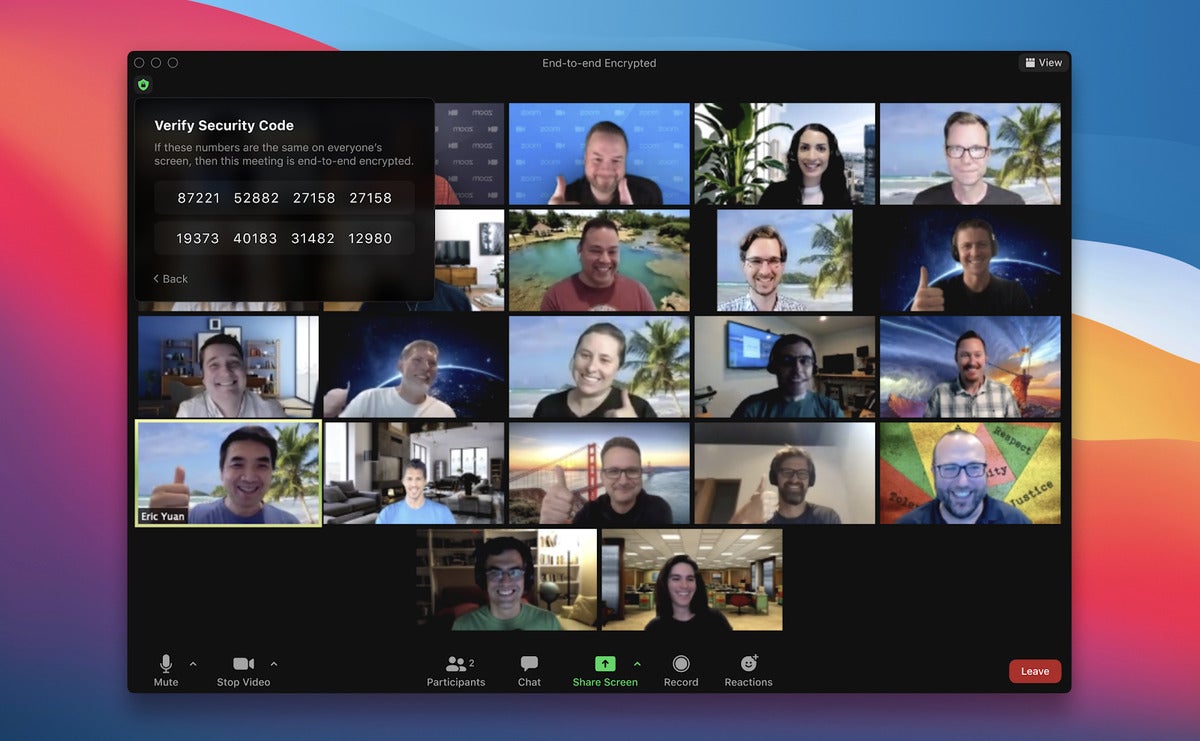The pandemic continues, and changes it brought to the workplace — the wholesale move to remote work — appear to be here to stay. So how will videoconferencing firms respond over the next 12 months?
Through most of 2020 during the COVID-19 pandemic, technology served as a lifeline for many businesses, keeping teams connected and working as offices shut down and employees set up offices at home. No technology arguably had a bigger impact on that shift than videoconferencing.
As 2021 arrives, video calls have become a part of corporate life that would have been unthinkable a year ago. Zoom — a platform previously known only to those who used it for work — became so popular that it is now a verb, used and understood commonly around the world as shorthand for a videoconference. (And “Zoombombing” became a related epithet.)
In February, as the severity of the coronavirus came sharply into view, Zoom said it had already added more new users in the first two months of 2020 than it had in all of 2019; by April it was boasting of 300 million daily meeting participants. (Even the Queen of England got involved.)
It was not the only videoconferencing platform to see unprecedented levels of growth. Not to be outdone, Microsoft in June reported that usage of its Teams platform had surpassed Zoom and it scrambled to beef up Teams with new features throughout the year.
Zoom hasn’t released updated user statistics since April, but during Microsoft’s Q1 2021 earnings call, CEO Satya Nadella said Teams had passed 115 million daily active users. (Google Meet, another popular video option, has around 100 million participants logging into meetings every day.)
Though each of the companies counts users, meetings, participants and sessions differently to highlight its own successes, the bottom line is this: videoconferencing is here to stay. That’s especially true, given that the pandemic will linger into 2021 and many employees have said they don’t plan to return to the office en masse — even when it’s safe to do so.
With that backdrop, and with companies better understanding how to harness the power of video for collaboration and productivity, here’s what to expect in 2021 as videoconferencing continues to evolve and grow.
What do users want?
When workers first set up camp in living rooms, home offices, and spare bedrooms, companies that didn’t already have an established videoconferencing platform figured the list of necessary features was relatively small: Would it be easy to use, effective, and could employees speak to their whole team on one call?
While Zoom, Teams, Google Meet and Webex and others all released new features in 2020, the focus was largely on improving the basic user experience — not rolling out unnecessarily flashy features.
Microsoft
Integrating soon: AR and AI?
By now, most companies have a well-established strategy in place, meaning they can demand more innovative features to help make the remote work experience better.
Wayne Kurtzman, research director for social and collaboration at IDC, argued that expectations will be driven by users’ experiences on other platforms and applications.
“For example, visualizations of data using AR could be very important in a business context,” he said. “Or [you could] have an hour-long meeting automatically cut down for each user to five minutes and, in case they couldn’t make it, to at-mention them. That level of AI also proves very valuable.”
The ability to automatically search relevant documents during a meeting could become very powerful, he said, building on efforts to find ways to work faster and smarter. Kurtzman predicted that over the next few years, emerging technologies will increasingly find a home on videoconferencing platforms.
“It’s not just augmented reality, but intelligent tools to find documents, the ability to identify people mentioned at the meetings or to automatically schedule to-do items — [all are] things that I would expect to see in 2021, from at least some vendors,” he said.
Raul Castanon, senior analyst in workforce productivity and collaboration at 451 Research S&P Global Market intelligence, agreed, noting that basic AI features have already been popping up on many of the big videoconferencing players.
“I think they will become standard, because there’s a lot of value in them,” Castanon said. “Specifically, the real-time transcription and also meeting highlights and meeting summaries. Those are, I think, going to become standard features across all platforms.”
Castanon also believes companies might start to see video embedded in tools such as CRM platforms or platforms used to provide technical support, allowing IT support workers to provide better, more personalized help to clients.
Integrated whiteboards
For Mike Fasciani, senior research director at Gartner, having what he dubs a “visual collaboration canvas” — integrated virtual whiteboarding technology — will be a big priority for many buyers in the future.
While many platforms already offer a basic whiteboarding feature, they don’t go far enough towards meeting the real-world collaboration needs of users. In physical meetings, people are able to storyboard or create a visual canvas of notes and ideas. Recreating this sensation of people jumping out of their seats to scribble ideas on a whiteboard is “one piece of the puzzle” vendors have so far failed to emulate, Fasciani said.
 Cisco
Cisco“This is increasingly cited by buyers as what they need to make remote work as productive as working in person with your colleagues. We’ve seen an incredible increase in interest on applications like that,” he said.
Security, security, security
Don’t think security should be front and center for video calls? Just ask Zoom.
Back in April, the company faced numerous security-related criticisms, ranging from concerns about the aforementioned Zoom-bombing to a bug that enabled hackers to steal Windows passwords and allegations in a California court case that the company was sharing data with Facebook – a claim Zoom fiercely denied.
Zoom
The security woes were severe enough for Zoom to temporarily halt development of new features for 90 days so it could focus on the problems.
Security research firm CyberArk highlighted a vulnerability in Teams around the same time; Microsoft patched the issue before users were impacted. And in June, Webex had to patch a bug that enabled cybercriminals to steal meeting records from within Cisco’s Webex service.
When it comes to prioritizing security or in-meeting features, Kurtzman says companies have mixed feelings. “All believe security is the top feature, but many companies also have to look at governance and compliance issues as well,” he said.
He stressed that security involves moving from protecting the perimeter of the network to protecting the data around each user and their devices — and moving to a zero-trust model will be a big focus for many companies.
“We know collaboration products, especially team collaboration and video conferencing, do have escalated spend through the upcoming year, at least,” Kurtzman said. “Even in companies where their [were] budget cuts, it is very likely they’ve increased spend on collaboration, video conferencing and security,”
While Zoom’s reputation suffered some bumps and bruises, Fasciani said the company managed to escape without permanent scars, largely due to the fact that many issues were caused by end-users failing to configure their meeting settings properly. By and large, he said, most of the market leaders in videoconferencing are on a fairly even playing field when it comes to security.
“My sense is there’s tremendous loyalty to Zoom by the buyers of Zoom and I think that’s going to continue to be the case,” Fasciani said.
Room for newcomers?
Given the prominence of established players, Castanon doesn’t believe leading vendors have to worry about being challenged by newer niche players.
“A lot of the financial institutions with customer-facing employees with high-value clients have typically had their employees working in the office where they provided the necessary security. Now, they’ve had to shift to working from home — that simply expands the opportunity for specialized, security-focused vendors,” he said.
Instead, as long as larger vendors continue to switch on additional features such as waiting rooms and participant lists, that will be enough to reassure their users, Castanon said.
Challenges ahead
Fasciani, Castanon and Kurtzman all see one of the biggest challenges companies will face as they move toward a hybrid work model will be how to democratize a meeting — in other words, how to seemlessly integrate in-person and remote participants.
“Remote participants, back in the good old days when we had people sitting in the office and some people calling in on a conference call, were often excluded from the conversation or forgotten about and had a harder time getting a word in edgewise,” Fasciani said.
That problem was effectively resolved when workers were forced out of the office and every participant was remote. The challenge in 2021 will be how to maintain that equal footing once some people do return to the office.
Google
“It’ll be interesting to see what the vendors come up with,” he said.
With companies currently paying for, on average, four different videoconferencing solutions — a situation Kurtzman doesn’t believe is sustainable — videoconferencing vendors need to think carefully about how they add value to their platform. By making their software richer, either through augmented reality or improved visualizations, those vendors could ultimately reach a point where employees are all on screen, even if they’re in the same room, Kurtzman said.
While Castanon agreed that a hybrid workforce brings with it a unique set of challenges, he pointed to another issue video platforms have been grappling with: service availability.
“The number one issue that came up in the first six months was service reliability, as we might not always have the same bandwidth capacity at home,” he said.
Some vendors have started to make adjustments to provide users a better quality of service — even if their bandwidth is limited — because most users will blame the platform, not their bandwidth, for a poor experience.
“The capacity also to adapt to different network and device conditions, that’s also going to be much more relevant with a distributed workforce, because you’re talking about many endpoints distributed across different sites, with different network conditions,” Castanon said.
Kurtzman summed it up: “2020 is the year people started realizing the internet is a place and, ironically, 2020 was [also] the year we found out that work [is] not necessarily a place.”
This article originally appeared on ComputerWorld.



